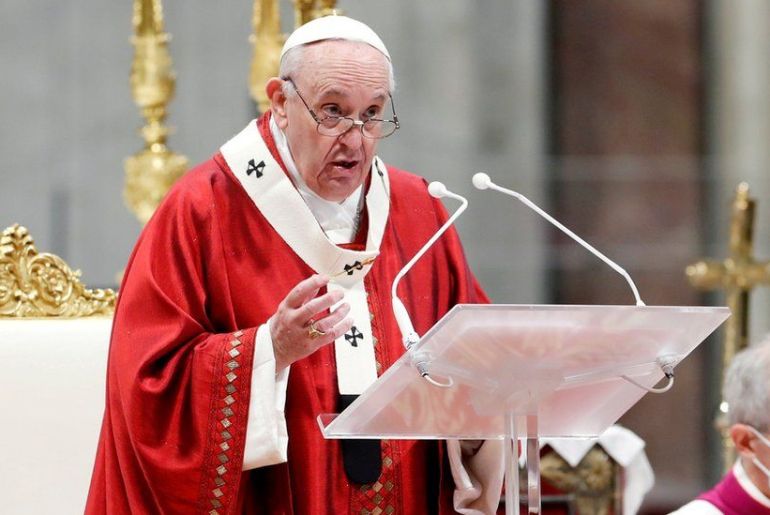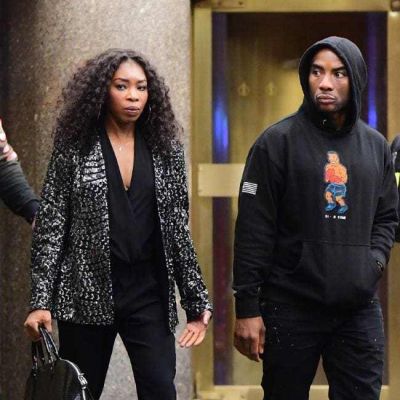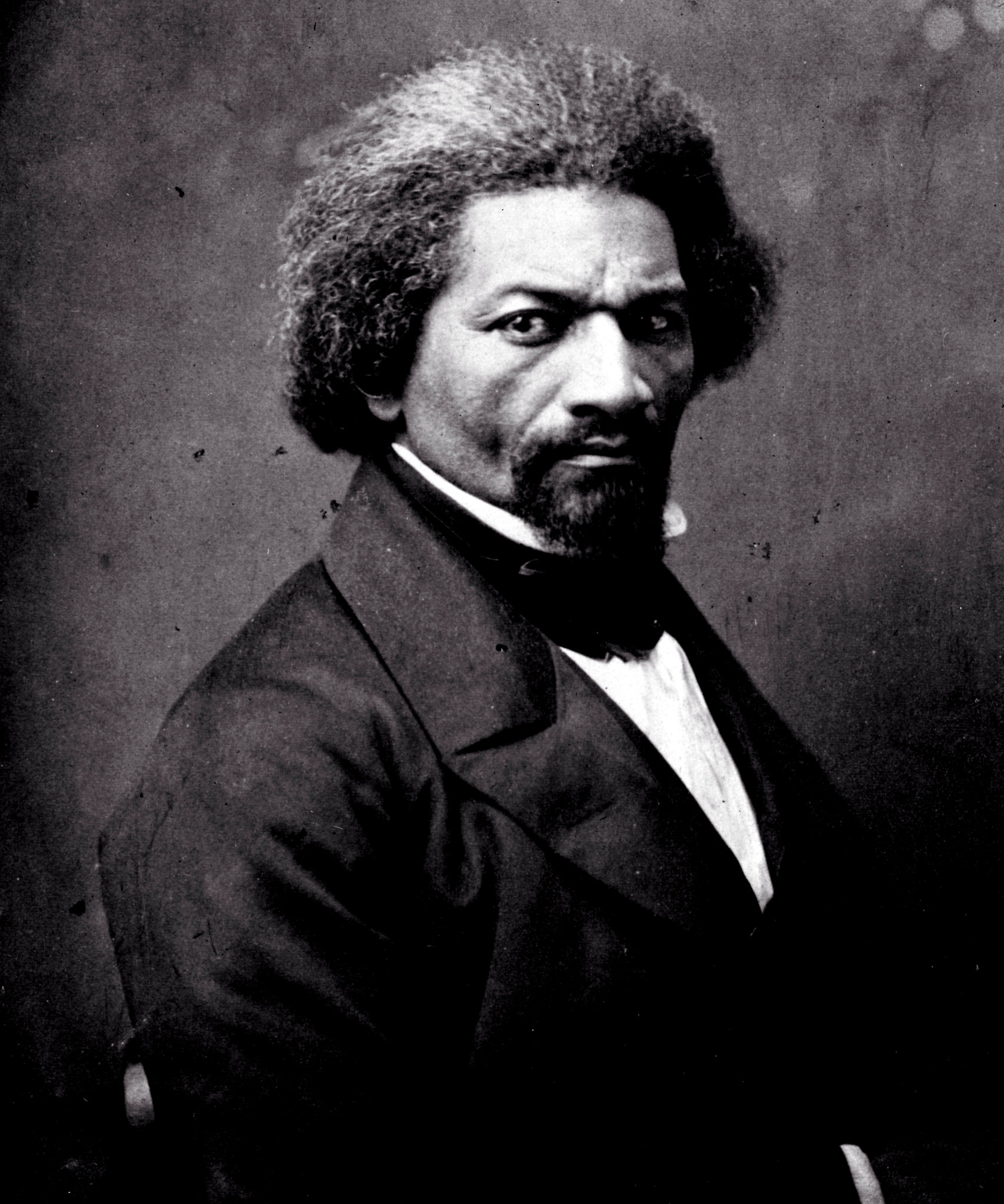Short biography of Pope Francis – Real name Jorge Mario Bergoglio, he was born on December 17, 1936 in Buenos Aires , Argentina. After having been Archbishop of Buenos Aires and Cardinal, he was elected Pope of the Catholic Church on March 13, 2013. Succeeding Benedict XVI , Pope Francis, known as “the Pope of the Poor”, becomes the 266th Pope and is also the first non-European pope since the 13th century.
Youth and formation of Pope Francis
The child of Italian immigrants, Pope Francis has two brothers and two sisters, but only Maria Elena is still alive during her papal election. On December 25, 1936, he was baptized by Father Enrique Pozzoli, who later became his spiritual director. In 1949, he studied at the Salesian college “Wilfrid Baron” in the town of Ramos Mejia, then obtained a diploma as a technician in chemistry at the industrial school ENET. Meanwhile, to support himself, he does housework in a local factory and is also a bouncer in a poorly attended nightclub in Cordoba (Argentina). Then engaged to a young woman, he is in a deep reflection which leads him to break off his engagement and take orders. In fact, he attended the San José church in the Flores district (Buenos Aires) then, in 1953, he rubs shoulders with the experience of “the mercy of God”, during a confession, and has “a divine revelation to enter into orders”, quotes AFP. In fact, on March 11, 1958, he began anovitiate of the Society of Jesus . He continued his spiritual training in Chile, then returned to Buenos Aires in 1963 to study philosophy. The young man taught literature for a while in a college in Santa Fe and then in Buenos Aires. Jorge then studied theology in San Miguel. On December 13, 1969, Monsignor Ramon José Castellano, Archbishop of Cordoba, ordained him priest.
Find out more
His career as a clergyman
In 1971 and 1972, the future Pope Francis made his Third Year (third year of formation as a Jesuit) in Alcala de Henares, Spain. He was then appointed master of novices of Colegio Maximo San José, a Jesuit institution in San Miguel, and on April 22, 1973, he made solemn profession. On July 31, 1973, he was appointed provincial (he has authority over the Jesuits and the ministries of his zone) of the Jesuits of Argentina for six years. After the dictatorship from 1976 to 1983, he became rector of the faculty of theology and philosophy of San Miguel, while remaining professor of theology. At the same time, he is pastor of the parish of Saint Joseph of San Miguel. Through his homilies, the future Pope Francis does a bit of politics, denouncing the corruption of politicians and the crisis of values in the country. Subsequently, he had problems with his order, because of the way he ran the school. He therefore went to Germany, to Frankfurt, to write a thesis at the Faculty of Philosophy and Theology of Sankt Georgen. NOT’
On May 20, 1992, the future Pope Francis was appointed Auxiliary Bishop of Buenos Aires by Pope John Paul II, at the age of 55. On June 3, 1997, he was made coadjutor from the same archdiocese. The following year, on February 28, he became Archbishop of the Archdiocese of Buenos Aires, following the death of Cardinal Antonio Quarracino. Then on February 21, 2001, he was instituted cardinal-priest by John Paul II as cardinal, which attached him to the Roman clergy and, in fact, to the clergy of the pope, bishop of Rome, of San Roberto Bellarmino. In 2005, he would have been in the race to be elected pope, but the choice ultimately fell on Joseph Ratzinger, who became Benedict XVI. Cardinal Bergoglio is elected president of the commission for drafting the final document, called the “Aparecida document”, during the 5th General Conference of the Episcopal Council Latin American which took place at the sanctuary of Aparecida in Brazil, on May 15, 2007. Being president of the conference of the bishops of Argentina, he makes his ” ad limina ” visit (a visit which the bishops must make every five years in Rome), March 14, 2009. Jorge Bergoglio is also a member of the Congregation for Institutes of Consecrated Life and Societies of Apostolic Life, of the Congregation for Divine Worship and the Discipline of the Sacraments, of the Congregation for the Clergy , of the Pontifical Commission for Latin America and of the Pontifical Council for the Family, within the Roman Curia .
His link with the Argentine dictatorship
The role of the future Pope Francis in the military dictatorship between 1976 and 1983 in Argentina remains unclear. In 2005, the journalist and director of the daily “Pagina 12”, Horacio Verbitsky, published “El Silencio” and launched the controversy. Indeed, he accuses Jorge Mario Bergoglio of having collaborated with the juntaand for not having tried to free Franz Jalics and Orlando Yorio, two Jesuits who were working under him at the time. The controversy is revived when Jorge Mario Bergoglio is elected pope. The accusations are denied the next day by the Vatican Information Service. There is currently no document that would link the Pope with the military dictatorship, and then, according to the Vatican, there is ample evidence to prove that Father Bergoglio protected these people. For Franz Jalics, one of the two Jesuits, after having discussed with Bergoglio and concelebrated a fraternal mass, the story is closed. Yet the involvement of the future Pope Francis is still controversial. But the sociologist from the University of Buenos Aires, Mallimacci Fortunato notably advanced in the Argentinian press that “witnesses declared that Bergoglio not only did not fight against the dictatorship, but that he even contributed to the kidnapping, torture or disappearance of many priests and lay people. “. Claims that have never been proven.
The election of the new pope
On February 11, 2013, Benedict XVI renounced his title of Pope. On March 12, 2013, a conclave meets to elect a new pope. The next day, Jorge Mario Bergoglio is elected, the traditional white smoke appears at 7:06 p.m., and the six bells of the basilica begin to ring. Pontificate under the sign of simplicity, he is the first pope to appear on the balcony without liturgical ornament. Located on the balcony of the Lodge of Blessings in St. Peter’s Basilica, the new Pope makes his first apostolic blessing ” urbi et orbi” “(” To the city and to the world “) and adds:” the cardinals went to seek me at the end of the world. “Then he prays for Benedict XVI, designating him” bishop emeritus “and recites the” Our Father “, the “Hail Mary” and “Glory to the Father” in Italian. Finally, he asks the assembly for silence and a prayer for him before giving his blessing again. During his inaugural audience, he receives Cristina Fernandez from Kirchner, the President of Argentina, who speaks to her about the situation with the United Kingdom, concerning the Falklands. In Saint Peter’s Square in the Vatican, on March 19, 2013, Pope Francis receives the pontifical insignia, then makes his first “inauguration mass of the Bishop of Rome.” Bartholomew I, the ecumenical patriarch of Constantinople, is present for the first time since 1054 and the great schism of the East.
Pope Francis committed against poverty
The life of Pope Francis is marked by austerity, he who gets up at 4:30 am, to end his day at 9 pm. The Pope is described as a shy, humble, self-restrained man. A religious who is not expansive, preferring modesty. He willingly avoids pomp and is faithful to his great cause: poverty. In fact, when he was appointed archbishop in Argentina in 1998, the future pope favored life in a modest apartment rather than in a sumptuous palace, to which he was nevertheless entitled. He then travels by public transport. Likewise, when he was made cardinal-priest in 2001 by John Paul II, he went to this ceremony on foot, quite simply. On this occasion, he refuses his compatriots to come to Rome and orders that the money collected to pay for plane tickets be distributed to the poor. At Francisco Muniz Hospital in Buenos Aires, he washes the feet of twelve sick patients with AIDS, telling the press that “society forgets the sick and the poor”. In addition, during his career in Argentina, Jorge Bergoglio regularly visited the slums, encountering poverty. He even settled there for a time, to support a priest threatened by drug traffickers. What quickly take the nickname of “Pope of the poor”. These anecdotes echo his early days as pope. Indeed, on the evening of his election, March 13, 2013, Pope Francis refused to get in a car with driver, preferring to slip into the minibus borrowed by the cardinals to go to the house of Saint Martha. The name chosen by the 266th Pope, “Francis”, is also not insignificant. Saint Francis of Assisi , this religious of Italian origin who, coming from a wealthy family, had chosen poverty, mingling with lepers and going so far as to give alms.
A Jesuit Pope, a first
Jorge Mario Bergoglio chooses to become a Jesuit . This means that he is part of the Society of Jesus, an obedience devoted to the papacy. To integrate this order, studies are long. The future Pope Francis thus studied for fifteen years several subjects, including theology, philosophy and psychology. Ordained a priest in 1969, it was not until the age of 37 that he completed his initiatory journey, pronouncing his last vow, that of allegiance to the Pope. In accordance with Jesuit tradition, Jorge Mario Bergoglio is therefore an intellectual. A scholar, who, in addition to French, English, Spanish and Portuguese, is fluent in Italian, which is the language of his parents, but also German and of course Latin. In his free time he enjoys reading the works of Jorge Luis Borges and Dostoyevsky., but also leafed through the press. He is also an opera and football fan.
Marriage of priests, homosexuals and abortion his opinion
The “Pope of the Poor” is not a reformist Pope. On many issues of society, Pope Francis shares the positions of his predecessors, whether on the question of abortion, contraception, ordination women or same-sex marriage. Francis therefore appears to be a conservative pope. Thus, when the bill on same-sex marriage was debated in Argentina, Jorge Mario Bergoglio strongly opposed this reform, calling marriage between two people of the same sex an “anthropological retreat”. He also protested against the right granted to transsexuals to change their civil status in Argentina. In addition, for the Pope, abortion is an ethical problem, not a religious one. He is opposed to it, even in cases of rape, and considers that it is a deprivation of “the first of human rights”, that of life, and that “to abort is to kill someone without defense” and that is “never a solution”. Finally, he is also opposed to the marriage of priests, as well as that of married men who wish to become a priest. Even if the question has been debated for lack of priests in office, the Pope is adamant it will not happen under his office. On these themes, the pontificate of Pope Francis does not therefore adopt a revolutionary position. Jorge Mario Bergoglio, however, took a stand in 2012 against Argentinian priests who refused to baptize children born out of wedlock, calling these priests “hypocrites”.
Japan, Morocco, Madagascar. Its international relations
With the current power in Argentina, Pope Francis has maintained strained relations. Among its detractors is also part of British public opinion. Thus, in 2011, the future pope, taking a clear position in the conflict between the United Kingdom and Argentina over the Falklands, thus affirmed that “the Falklands belong to Argentina”. On March 30 and 31, 2019, for his 28th apostolic journey, the Pope is visiting Morocco. Under the sign of hope, he responds to the invitation of King Mohammed VI, in order to dialogue on Islam and the issue of migration. After the interview, the holy man goes to the Institute for the training of imams, which is a first for a pope in a country that is 99% Muslim, and its 30,000 to 35,000 Catholics.
Pope Francis also visited Madagascar in early September 2019. There, he denounces excessive deforestation, corruption, exclusion and poverty, asking the authorities to create jobs that respect the environment. Madagascar is indeed one of the poorest countries in the world, where 9 out of 10 people live on less than two dollars a day. He also visited Japan at the end of November 2019, a country he had wanted to see since his youth. For the Land of the Rising Sun, his message advocates nuclear disarmament: “Soon, I will visit Nagasaki and Hiroshima where I will pray for the victims of the horrific bombardment of these two cities and I will echo your own prophetic calls for it. nuclear disarmament”. He also prays for the victims of the tsunami of March 2011,
The Pope’s letter on the meaning of the manger
On December 1, 2019, Pope Francis publishes an apostolic letter ” Admirabile signum ” on the value of the crib and its meaning. “The marvelous sign of the manger, so dear to the Christian people, always arouses astonishment and wonder”, such is the beginning of the Pope’s letter. He describes the family tradition that we learn from childhood as “a living Gospel”, and hopes that this tradition “fallen into disuse, can be rediscovered and revitalized”. He also supports the fact of extending the installation of this custom in workplaces, schools, prisons, hospitals. The Pope also welcomes the initiative of Saint Francis, who set up the first living nativity scene. for Christmas in Greccio, in 1223.
Twitter, Instagram. A connected pope
Pope Francis is present on the social network Twitter, via the account @Pontifex . Its goals are to evangelize through tweets and to connect with youth. Each tweet is published in nine languages. In February 2020, he had 1.5 million subscribers for his French twitter account.
On March 19, 2016, he also subscribed to Instagram under the name of Franciscus and then declared: “I am starting a new path, to walk with you the paths of the mercy and tenderness of God”. As of February 2020, his account has 6.5 million subscribers.
Pope Francis quotes
“Killing in the name of God is an aberration, we must believe with freedom, without offending, without imposing, or killing”
“It seems that my cardinal brothers went to seek me at the end of the world” (during his election)
“Climate change is one of the main challenges facing humanity today”
“I ask each person in this world not to forget their dignity that no one has the right to take away from them”
“The climate is a common good, of all and for all”
“Terminating a pregnancy is like killing someone. Is it right to eliminate a human life to solve a problem?” (during his weekly audience in St. Peter’s Square, Vatican City, October 10, 2018)
POPE FRANCIS: KEY DATES
December 17, 1936: Birth of Pope Francis
Born in Buenos Aires, Jorge Mario Bergoglio and his parents do not yet know what fate awaits him. The young Argentinian has no idea that he will reign over the Catholic world.
December 13, 1969: Ordained priest
A few days before his 33rd birthday, he was made a priest by Monsignor Ramon José Castellano.
May 20, 1992: Appointed Auxiliary Bishop
Pope John Paul II appoints him Auxiliary Bishop of Buenos Aires.
February 21, 2001: Cardinal-priest made
Continuing to climb the ranks thanks to Pope John Paul II, he made him cardinal-priest under the title of cardinalice. This makes him a cardinal attached to the Roman clergy, and thus to the pope’s clergy, who is the bishop of Rome.
March 13, 2013: Elected Pope
Pope Benedict XVI renouncing his title, a new pope must be elected. The choice fell on Jorge Mario Bergoglio. Elected, the latter becomes the “Pope of the poor” and takes the name of “Francis”.











